Some scientific results of Spipoll
Using the data collected by SPIPOLL observers in 2010, the museum's scientists studied which of the three main types of environment found in France is preferred by floricultural insects: the urban environment, the agricultural environment and the natural environment (which mainly includes forests).
A quick update on the method:
The analyses were carried out on insect taxa that were photographed at least 30 times during 2010. This limit, necessary for the robustness of the results, focuses the analysis on 79 taxa within the 2169 collections.
For each of these 79 taxa, an average index of whether a taxon prefers or avoids a type of environment was constructed, based on the proportion of each environment surrounding the collections within a 1km radius. If the mean value of the index is less than 0, it means that the taxon tends to avoid these environments.
If the mean value of the index is greater than 0, it indicates that the taxon tends to prefer these environments.
The results indicate that floricultural insects tend to avoid urban environments. This could be explained by the small number of places that allow these insects to nest, such as bare ground or dead wood. Despite the sometimes significant presence of floral resources in parks, it seems that this does not counterbalance the lack of environments necessary for nesting.
On the contrary, it seems that floricultural insects have a positive affinity for natural and agricultural environments. Natural environments offer these insects what they need to carry out their life cycle and thus maintain themselves. In contrast, other studies show that agricultural environments are not necessarily hospitable to these insects. Here, the strong affinity of floricultural insects for the agricultural environment could be explained by the fact that this environment was considered as a whole: from intensive cultivation fields to permanent hay meadows. However, hay meadows are much less disturbed than intensively cultivated fields. Therefore, there could be a difference in the affinity of floricultural insects for these two types of environments: a positive affinity for meadows and a negative affinity for fields. In order to test this, more data is needed, and therefore more SPIPOLL collections to better understand the affinity of floricultural insects to environments.
Get your cameras ready!
Positioning your data
Discover the impact of environmental conditions (climate, time of day, clouds etc.) on your observations. This "radar" graph shows you the ideal observation conditions in green. When your observations are in purple, your results are altered because pollinating insects are reluctant to visit flowers under these conditions.
Understanding your result :
This graph allows you to put your results into perspective. Thus, if you carried out the protocol under unfavourable conditions (purple zone), it is not surprising that you saw few insects.
On the other hand, it is in "normal/optimal" conditions (green zone) that the differences between collections can be better interpreted. The number and variety of insects observed then reflect the work of ecological mechanisms: a plant offering more or less resources (nectar and/or pollen) or the quality of the habitat (pollution, availability of nesting areas, etc.) influence the diversity


